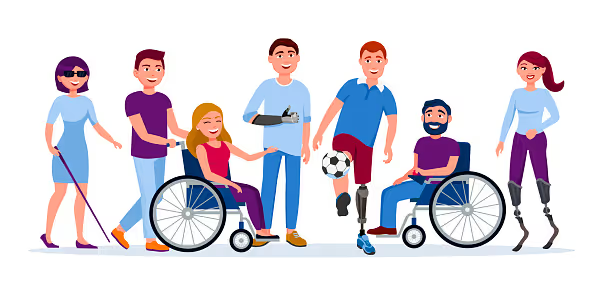
Inclusive Body Positivity Series: Disabled Bodies
Are you shocked that I used the word disabled? Are you thinking, “why would she, it’s such a negative word”! Hey, I thought the same, and thought I was revolutionary for using the term “differently-abled” which has become so popular. But I went digging, and guess what? The actual people we are talking about when we dance around “negative words” prefer to be called disabled. The community generally agrees that “differently abled” is not useful in a few ways: it makes it seem as if there should be a “normal”, and it minimizes and is euphemistic about the actual intense struggles and real inability for many people with disabilities to do certain things. All in all, listen to the actual people you are talking about, lift their voices instead of magnifying yours, and do your research!
So now that we have vocabulary down, we need to talk about how mainstream body positivity can do better when it comes to including disabled bodies. First of all, the kinds of representation in the media when it comes to body positivity typically revolve around sizeism and fat acceptance, which is a super important piece of the movement. However, disabled bodies, both those that are visually disabled and those that have invisible illnesses, also deserve to be represented, embraced, and applauded. People in disabled bodies deserve to take up space in this movement, just like others do. And not assuming bodies aren’t disabled just because they don’t present as such to you is really important too. Invisible illnesses are real and valid as well.
Secondly, whilst doing my research, I kept coming across a similar line of thinking. Letting go of having a “perfect body” or looking like a runway model seems to be doubly more difficult in a disabled body. On the one hand, the media is shoving these images down your throat just as much as the next person. On the other hand, many people in disabled bodies will never be able to stand, move, or closely represent bodies seen in magazines, TV, movies, etc. Not to mention the genes, photoshopping, socio-economics, culture, and illnesses that may make bodies in these mediums unattainable for people in any type of body. So letting go of both the image and the desire to be like the image, as well as the anger that comes with inability to attain the image completely, fuels a certain kind body negativity that needs to be examined and held gently by the body positivity community at large. Let’s allow our fellow body positive members in disabled bodies to get angry, scared, frustrated etc. Let’s hold that with them without judgement for every member of the body positive community.
While embracing and validating this anger, let’s also remember that all bodies are good bodies, and all bodies deserve to feel loved, supported and beautiful! Ask your friends who might be in disabled bodies what kind of support and love they need, and work to hear and see them as they deserve to be heard and seen! The work of undoing our own biases and expectations is hard and long, but it is worth it, and loving/supporting disabled bodies matters!
All in all, disabled bodies deserve to be and should be a huge part of the body positive movement, and the work should be on able bodied people to do research, and call in our fellow friends with inclusivity and open arms. I highly suggest that you seek out disabled body positive activists and listen to what they have to say, since that is far more important to amplify than my voice as an able bodied person. I’m putting some links below to great articles by the disabled body positive community: please take a minute to read them and educate yourself!!
https://www.refinery29.com/en-gb/body-positivity-disability